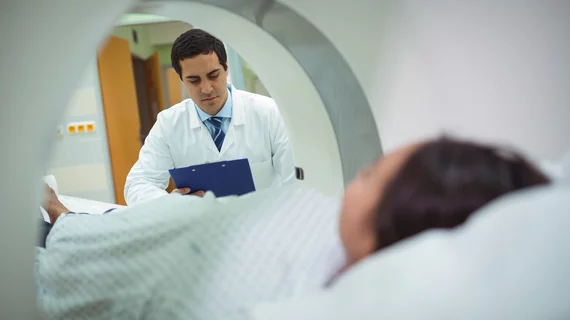Follow-up imaging adherence rates vary based on a number of factors, according to new research published in the American Journal of Roentgenology. The authors noted that closely monitoring such patterns can help providers engage patients and minimize risk.
“Imaging recommendations are often made to monitor the stability of potentially clinically relevant findings, to ensure the long-term stability or resolution of findings, or for further diagnostic characterization,” wrote author Thusitha Mabotuwana, PhD, department of radiology at the University of Washington (UW) in Seattle, and colleagues. “However, failure to comply with imaging follow-up recommendations in a timely manner is common and can lead to delayed treatment, poor patient outcomes, complications, unnecessary testing, lost revenue, and medical malpractice risk.”
Mabotuwana et al. used examination data, including radiology reports, to track follow-up imaging adherence rates from June 1, 2015, to July 31, 2017, within the radiology departments at UW and Lahey Hospital and Medical Center (LHMC) in Burlington, Massachusetts. The research included more than 920,000 examinations at UW and more than 760,000 examinations from LHMC.
Overall, using an algorithm with a 97.9 percent detection accuracy, follow-up imaging adherence rates were 11.4 percent at UW and 20.9 percent at LHMC.
Taking mammography out of the equation, however, those rates jumped to 51.9 percent at UW and 52 percent at LHMC. The rates at UW ranged from 44.4 percent for nuclear medicine and 63 percent for MRI scans. At LHMC, the rates ranged from 30.1 percent for fluoroscopy to 63.2 percent for ultrasound.
“Given the low observed native follow-up imaging adherence rates, new scalable techniques are needed to allow radiology administrators to easily identify opportunities where improvements to this shortcoming can be made,” the authors wrote. “Validation of cases of missed follow-up examination and effective intervention will likely require a combination of computer-aided and human activities. With the gradual transition to value-based health care, improving adherence to follow-up recommendations could be one of the ways radiology can provide more value to the referring physicians and contribute more toward the overall management of the patient.”
Mabotuwana and colleagues also emphasized the importance of being able to scan through radiology reports for information related to follow-up recommendations. This is something researchers should keep in mind when developing new algorithms in the future.
“For follow-up detection algorithms to be more useful in routine practice, it is important to make algorithms scalable and generic so that recommendations can be identified from all radiology reports irrespective of modality or type of finding,” they wrote.
The team did note that their study had some limitations. For example, an “imperfect algorithm” was used that left “room for improvement in matching accuracy as more annotated data becomes available.” Also, their research did not track imaging examinations performed outside of the health systems in question, “potentially resulting in incomplete imaging history.”

